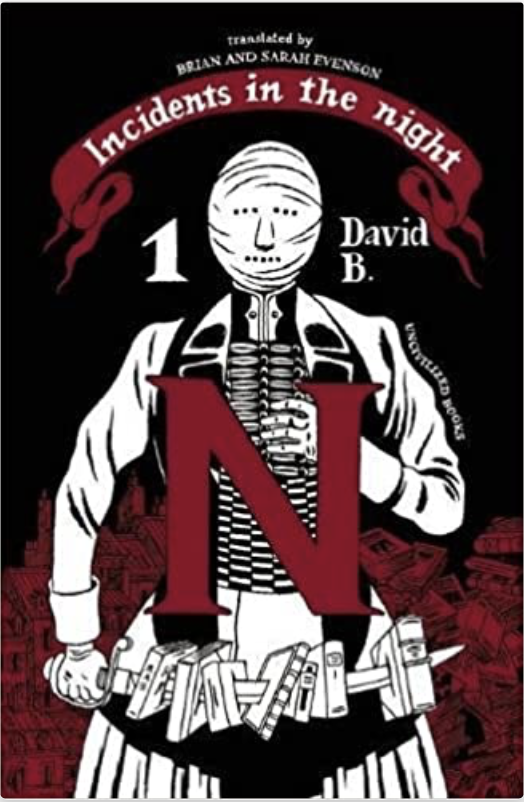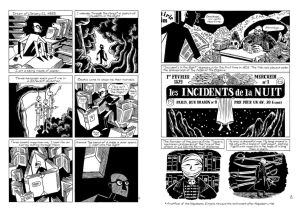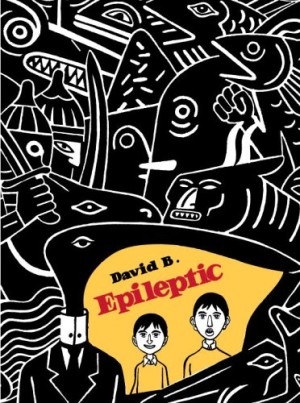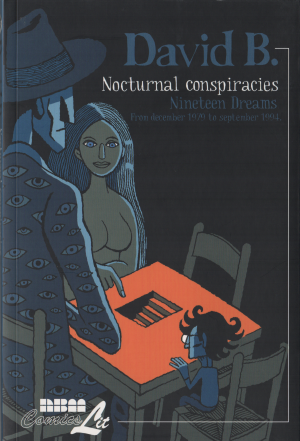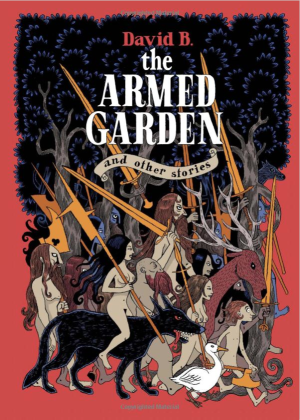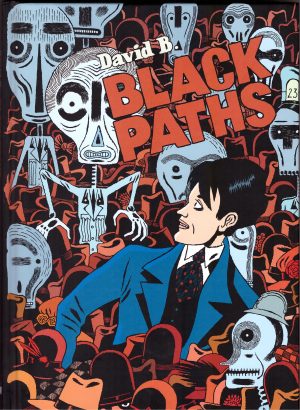Review by Graham Johnstone
Incidents in the Night is a book by David B, about ‘David B’ finding a book, called ‘Incidents in the Night’. ‘David’ first dreams about the book, triggering a quest for copies and the stories behind them. The quest supposedly begins after he wakes, yet retains the quality of a dream.
This quest’s ‘holy grail’ is the 1829 first issue of ‘Incidents in the Night’ (hereafter – ‘Incidents’). Quests typically involve exploration of new places and cultures, but David never leaves Paris, travelling mostly between bookshops. In quest terms, the booksellers are mentors (think Gandalf or Obi-Wan Kenobi). They’re also guardians of thresholds, in this case, to knowledge, through books offered, stories told, and secret back rooms, so ushering the quest into the realms of stories.
‘Incidents’ was founded by Émile Travers, a former officer for Napoleon, aiming to restore the deposed Emperor to power. The reported death of the latter was considered immaterial, as this was an enterprise of the occult. To this end, ‘Incidents’ published articles of a “fantastical or esoteric nature, presenting them as authentic”. The book-within-the-book, then, mirrors the book itself.
In a further mirroring, David B (aka Beauchard) created Incidents as a periodical. This first of two books collects three serialised issues. The original covers are included at the end, but may have been better left in place. The free-flowing story is better appreciated as three phases corresponding to the original issues. The first focuses on the history of ‘Incidents’, and the legend of Travers surviving inside a book comprising only the letter ‘N’. In the second, bookseller Mr Lohm, offers David some context around the deathly symbolism of that letter, drawing on Greek gods and Babylonian legends. The third and final part here, involves ‘Incidents’ re-emergence in the present, with links to a criminal gang and murders, so turning the traditional quest into a modern detective story.
Incidents in the Night is a meta-fiction, both a mystery of the imagined book and its creator, and an exploration, in the form of a story, of the methods and devices of stories. Perhaps the closest comparison in comics is the adaptation of Paul Auster’s City of Glass, though Beauchard’s book is more lighthearted.
Beauchard’s masterwork Epileptic focussed primarily on personal memory and imagination, but Incidents in the Night moves, via books, into collective memory and imagination. Beauchard’s conception (back in 2002) of the “fantastical or esoteric” presented as truth, feels painfully prescient of ‘post-truth politics’.
The apparent simplicity of the artwork belies the skill and experience behind them. People are gently caricatured, ensuring each is distinctive. Their figures, and their faces – sometimes as small as a centime – are equally expressive. Elegant compositions arrange multiple figures in vivid settings, and his sensitive use of tone and line-weight elegantly distinguishes fore and background. A flair for visual metaphor, and here, the sheer delight in rendering books, bookcases and bookshops in joyous variation, adds up to an exceptional visual experience to match the literary one.
Incidents in the Night, is a fresh twist on some of Beauchard’s obsessions, and a dreamy, fanciful, visionary, love-letter to literature, its dwelling place – books, and it’s great cities – bookstores. It ends on a cliffhanger, which, for a story about stories, seems entirely fitting. An Eisner Award nomination was well-earned, and a second volume very welcome.
